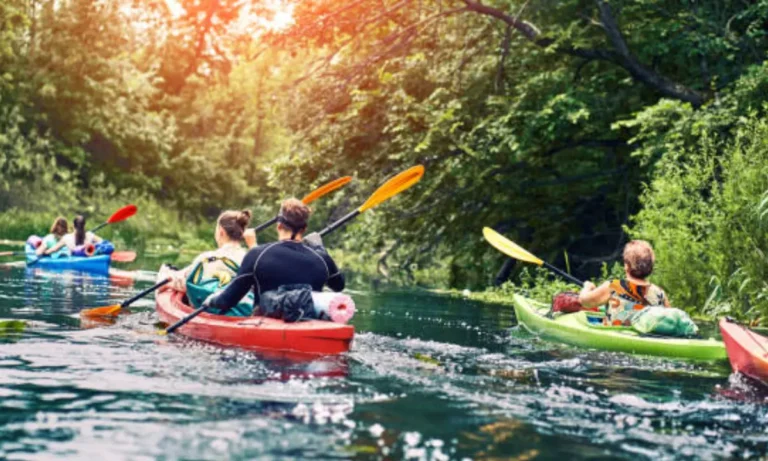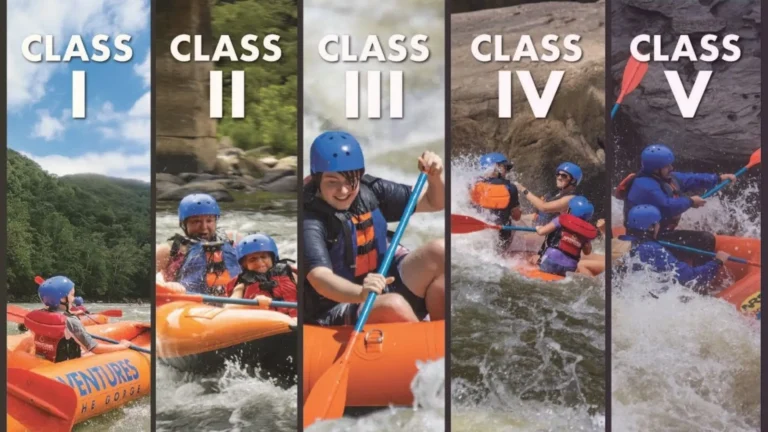Kayak Camping Gear List and Packing Tips
In this article, I explain the Kayak Camping Gear List and Packing Tips for messy tents and cumbersome backpacks. Experience an exciting new twist on camping by packing all your adventure gear into a sleek kayak! Kayak camping combines the freedom of paddling pristine waterways with the simplicity of spending nights riverside under the stars. It’s camping made easy, mobile, and even more magical.

All you need to bring is your sense of wonder – nature provides the rest. Learn the art of perfectly packing your kayak with all the camping essentials. Tetris has nothing on the spatial puzzles of squeezing pads, bags, food, and more into every nook and cranny of your boat.
We’ll share insider tips to make you a kayak camping packing pro so you can fully immerse yourself in nature’s peaceful beauty. Paddle away from the crowds and journey to secret spots accessible only by water. Kayak camping is an incredible experience just waiting to be discovered.
Our Top Picks of Kayak Camping Gear List and Packing Tips
Related Article: How to Portage a Kayak: Carrying Tips & Solutions
Kayak Accessories

It is the first point of the Kayak Camping Gear List and Packing Tips. Not all kayaks work well for camping. Short, slow sit-on-top kayaks lack the storage space needed for overnight trips. Touring kayaks are better for camping. Though more expensive, they have sleek designs and ample internal storage.
If you only have a sit-on-top, camping is possible but challenging. The lack of storage means stacking gear on the deck. But more weight up top makes the kayak stable. It can become top-heavy and prone to tipping.
For beginners, it’s best to borrow or rent a touring kayak for camping. The right boat makes the experience more enjoyable. Finding a kayak with enough enclosed storage to pack gear safely is key. Sit-on-tops are meant for day trips. For overnight adventures, a touring kayak is ideal.
Essential Safety Equipment

It is the second point of the Kayak Camping Gear List and Packing Tips. The top priorities are communication, navigation, first aid, and items to prevent and respond to capsizes or emergencies.
Clothing system

Your clothing should match the weather where you’re kayaking. Stick to synthetic or wool clothes as they keep you warm even if they get wet.
Rain Gear and Jackets
You need good clothes to keep you dry when it is cold and wet. I kayak in a place where it rains a lot. I have two kinds of clothes to keep me dry. One is thick and rubbery for heavy rain. The other is thin and light for less rain.
This is the third point of the Kayak Camping Gear List and Packing Tips. Thick clothes are good for very wet days, but they make you sweat. Thin clothes let your skin breathe, but they are not very dry. You can put extra clothes in a bag that keeps them dry. You can also use them as a pillow when you sleep.
You need a warm jacket if you kayak in cold places. You may not need it when you kayak, but you can wear it under your dry clothes. It will make you feel warm if it is wet or windy.
5 Kayak Camping Secrets
Layers and Gloves
You need many clothes that you can put on or take off easily.
The water can be hot or cold at different times. You should have more clothes near you, under the ropes or next to your seat. This way, you can change your clothes without st.
If your hands get sore, wear gloves for kayaking. If it is cold and wet, that is warm and dry or covers for your hands. They will make you feel better.
Tent Clothes
I keep all my clothes in a bag that does not let water in. I put the clothes that I only wear in my tent at the bottom of the bag. I do not wear them outside. This way, I always have dry clothes to change into before I sleep. I also bring more socks and underwear than I need. Wet socks make me unhappy.
Tent and Sleeping Gear

Don’t skimp on your tent quality – invest in one that is durable and waterproof. Look for these key features:
To save space, remove tent poles from the bag. Store poles alongside kayak seats.
This allows you to compress and stuff the tent material into narrow spaces.
A quality tent is essential for comfortable kayak camping. Prioritize waterproofing, vestibules, and appropriate temperature rating. Proper packing maximizes your limited storage.
Sleeping Bag
Sleeping bags come in tie-down or synthetic fills. Each has pros and cons:
Tips for synthetic bags:
Always use a dry bag for protection, even if a bag is synthetic. A wet sleeping bag ruins a trip.
Stuffing between kayak legs provides padding and support during paddling.
Choose fill based on the weather. Synthetic excels if dampness is likely. Down packs easier but avoid moisture. Proper packing takes practice!
Cooking and Eating Utensils
With careful planning, you can fit excellent kitchen gear in a limited space. Compact cooksets plus keeping small items organized make cooking easy. Proper waterproof storage prevents soggy meals.
Food

With limited space, plan food carefully. Dried and freeze-dried fare packs best long-term. It is the 2nd last point of Kayak Camping Gear List and Packing Tips. Fresh food adds variety early on. Follow park rules for storing food safely away from wildlife at night.
Personal Gear

It is the last point of the Kayak Camping Gear List and Packing Tips. Though often overlooked, personal items like baby wipes and lip balm make a big difference in comfort. Store toiletries appropriately away from water and wildlife. With the essentials covered, you’ll paddle happy and healthy!







6 Comments